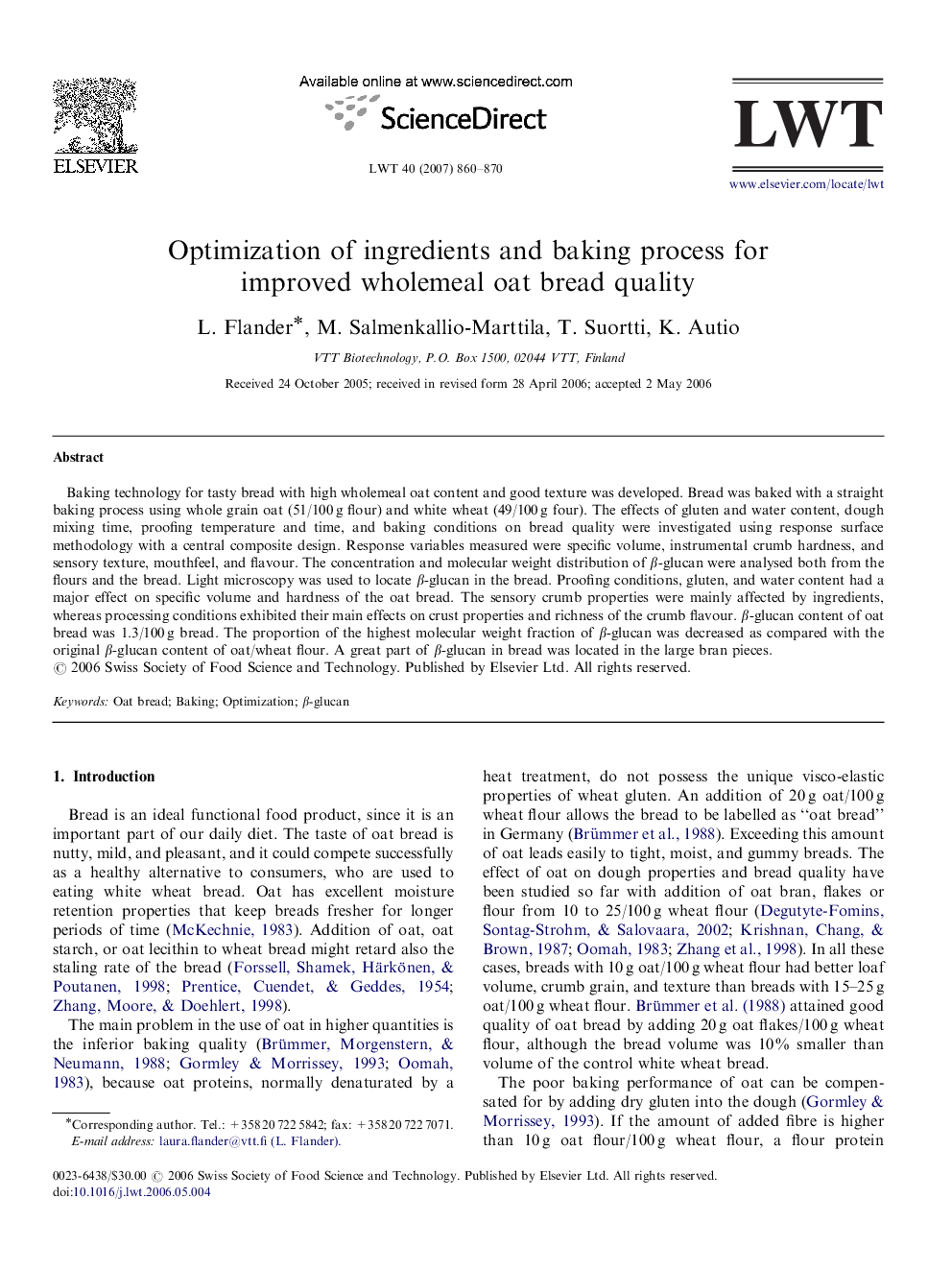| Article ID | Journal | Published Year | Pages | File Type |
|---|---|---|---|---|
| 4565456 | LWT - Food Science and Technology | 2007 | 11 Pages |
Baking technology for tasty bread with high wholemeal oat content and good texture was developed. Bread was baked with a straight baking process using whole grain oat (51/100 g flour) and white wheat (49/100 g four). The effects of gluten and water content, dough mixing time, proofing temperature and time, and baking conditions on bread quality were investigated using response surface methodology with a central composite design. Response variables measured were specific volume, instrumental crumb hardness, and sensory texture, mouthfeel, and flavour. The concentration and molecular weight distribution of β-glucan were analysed both from the flours and the bread. Light microscopy was used to locate β-glucan in the bread. Proofing conditions, gluten, and water content had a major effect on specific volume and hardness of the oat bread. The sensory crumb properties were mainly affected by ingredients, whereas processing conditions exhibited their main effects on crust properties and richness of the crumb flavour. β-glucan content of oat bread was 1.3/100 g bread. The proportion of the highest molecular weight fraction of β-glucan was decreased as compared with the original β-glucan content of oat/wheat flour. A great part of β-glucan in bread was located in the large bran pieces.
